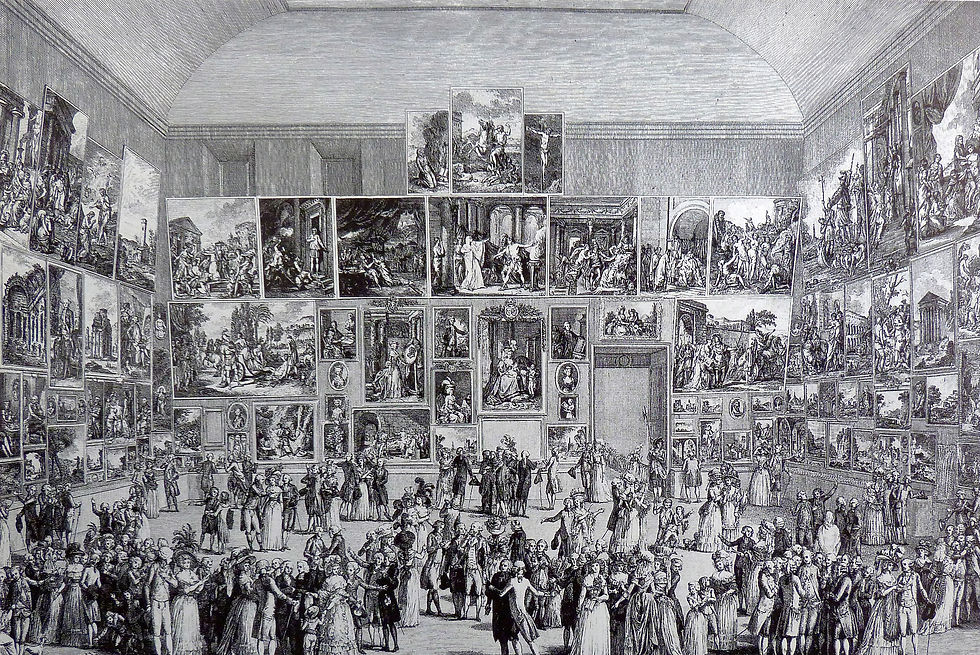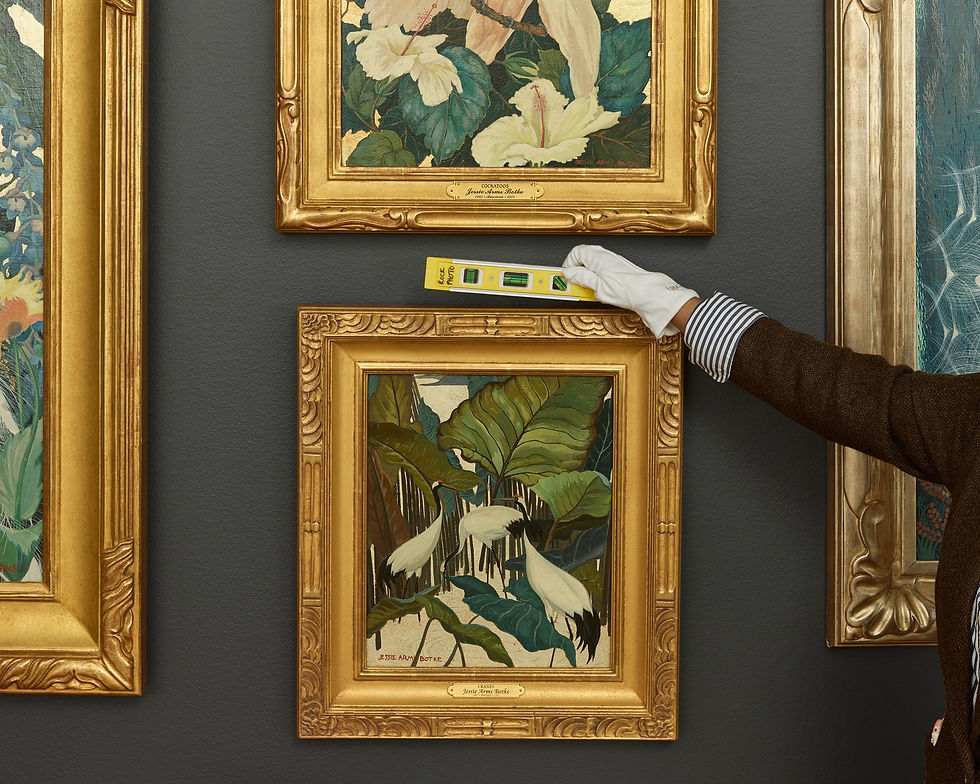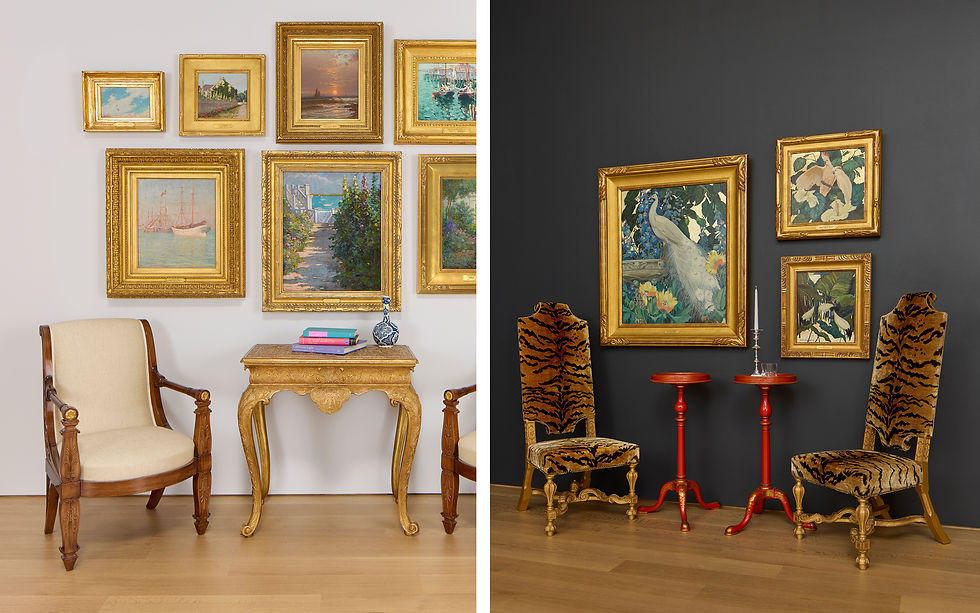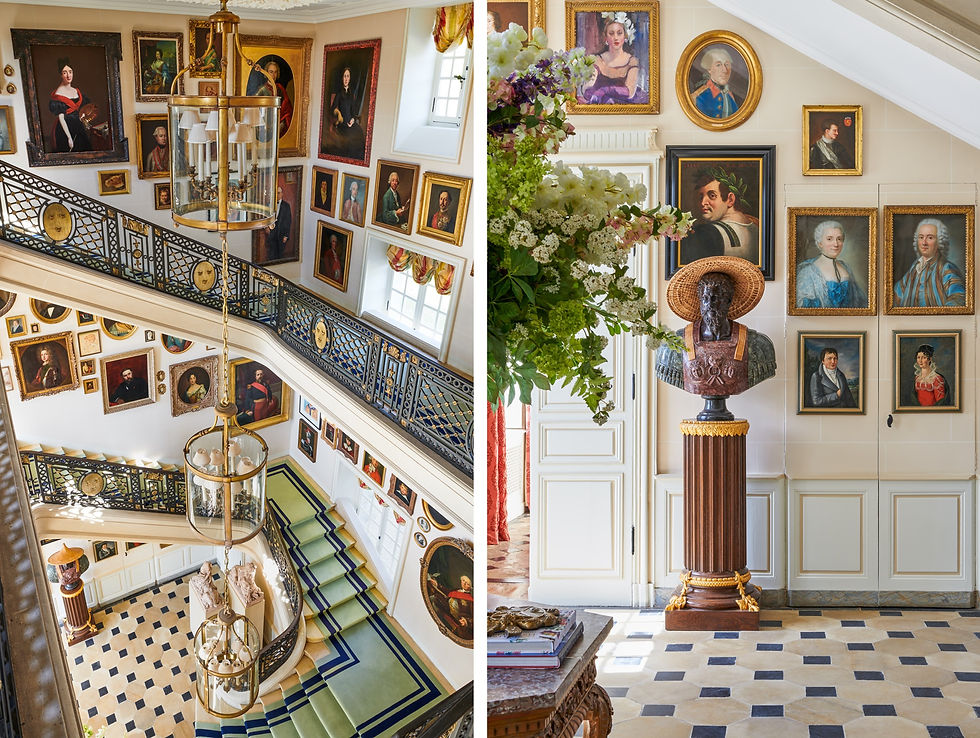Hanging Art Salon Style: Everything You Need to Know
Much like collecting, there are no hard rules for arranging and hanging art — but there are some guiding factors, particularly when it comes to a salon-style hang. Popular for centuries to showcase one’s treasured works en masse, this maximalist approach can provide a dramatic focal point in any interior. While the process of selecting which works to hang beside one another is often an exercise in intuition, there are several tips for producing thoughtful eye-catching juxtapositions and ensuring the wall looks balanced and dynamic.

A selection of works offered in American Atmosphere: An Important Private Collection on 27 September-18 October 2024 at Christie’s Online
Having established his award-winning firm more than 25 years ago, Los Angeles-based interior designer Timothy Corrigan has mastered the art of the salon-style hang. As a self-proclaimed ‘inveterate collector,’ his personal experience acquiring art for his numerous homes, which have consistently included historic French chateaux, (as illustrated in his latest book, At Home in France: Inspiration and Style in Town and Country) have equipped him with the ultimate eye and instinct. Here, he shares his finest advice, from creating the ideal mix of art to selecting the right frame.
When did salon-style hangs begin?
During the late 17th century, salons rose to popularity as a means for cultural patrons and society to gather and view art. The Académie Royale de Peinture et de Sculpture held salons (originally annually) in Paris where recent graduates of the École des Beaux-Arts could showcase their work. To present as much art as possible with limited wall space, paintings were hung from floor to ceiling and in close proximity to one another.

An engraving by Pietro Antonio Martini depicts the floor-to-ceiling hang at the Salon of 1787 which took place at the Palais du Louvre
This inspired alternative salons across France and Europe, and eventually America by the mid-1800s, when many of the nation’s first art museums and schools were founded. With more opportunities for public exhibition, ‘salon-style displays became the standard due to their efficient use of space, aligning perfectly with the Victorian era’s “more-is-more” aesthetic,’ says Corrigan.
Decided by the curators, placement was especially key. ‘Certain locations were clearly more desirable than others. In this hierarchical arrangement, the most important paintings were hung at eye level, or “on the line,” while lesser-known artists’ works were positioned higher, or “skied,”’ says Corrigan, noting that artists often employed impressive frames to stand out.
What are some best practices for placing and spacing my art?
Many people find it helpful to make paper cutouts in the exact dimensions of the work they’d like to hang. These cutouts are ideal for playing with wall placement to more easily achieve the desired arrangement.
Similarly the artworks themselves can be laid out on a floor that is roughly equivalent to the size of the wall prior to hanging. This is Corrigan’s preferred method to not only get a sense of scale and proportion, but also to ‘account for the individual nuances and strengths of one piece next to another.’ He also suggests starting with the largest artworks first as the ‘anchors’ for the wall and then smaller works can be added around them.

If organically placing artworks proves challenging, even spacing can ensure that the hang feels balanced. A selection of works offered in American Atmosphere: An Important Private Collection on 27 September-18 October 2024 at Christie’s Online
If organically placing artworks proves challenging, a classic guideline is to adhere to a grid, ensuring even spacing between works. This helps ensure that all the works feel connected.
Ultimately it’s important to remember that hanging artworks salon style offers more flexibility than one may think, so there’s no need to overly fixate on the perfect arrangement. ‘The great thing about this style of displaying art is that it can always evolve and change,’ says Corrigan. ‘When I find a new piece that I like better than an existing one, I sometimes swap it out, and it’s fun to see how much it can change the overall effect.’
What’s most important to consider when it comes to frames?
Since the frame of a painting that’s hung salon-style doesn't have the same impact as it would hanging alone, frame selection generally offers more flexibility. ‘It’s always nice to have an interesting mix of frames to prevent the collection from looking like it was all assembled at the same time,’ says Corrigan.

Frames in similar golden hues naturally complement one another. A selection of works offered in American Atmosphere: An Important Private Collection on 27 September-18 October 2024 at Christie’s Online
Sticking to frames in similar hues and thicknesses can help keep the focus on the art and convey a sense of intentionality. For heavier, ornate frames, consider spacing pictures with more breathing room between one another.
Should I incorporate other types of media and objects?
‘Mixing media is great because you actually appreciate the individual works more by comparison to something that is very different and hanging adjacent to it,’ says Corrigan. While flat works can be treated similarly on the wall, sprinkling in sculptures, mementos and other three-dimensional objects, from plates to garments and accessories, is a sure way to add interest. There’s no reason a wall cannot become a veritable cabinet of curiosities.

A salon-style hang can provide a dramatic focal point in any interior. The maximalist approach has been a popular way to showcase works en masse for centuries. A selection of works offered in American Atmosphere: An Important Private Collection on 27 September-18 October 2024 at Christie’s Online. Furniture and decorative objects offered in Collections: Including Property from Three Northeast Collectors, Glenn C. Randall, Dr. Jeffrey Lant, and Peter Van Slyke on 9-22 October 2024 at Christie’s Online
How do I ensure my salon-style wall achieves the right mix?
Volume is key to salon-style hanging; you can’t pull it off with only a few pieces. You almost need to think of it as creating a kind of wallpaper with the art,’ says Corrigan. Salon-style hangs naturally lend themselves to collectors who gravitate towards specific themes. In Corrigan’s portrait gallery, paintings by Jean-Auguste-Dominique Ingres and John Singer Sargent hang alongside photographs by Robert Mapplethorpe. Sitters range from 18th-century royalty to the designer’s own family members and even animals. ‘Because they are all tied together by being portraits, you can have a lot of fun playfully mixing media, sizes and periods.’
Beyond themed subject matter, grouping works of a similar colour palette or from a specific artistic movement is a fail-proof way to create a salon-style wall.


